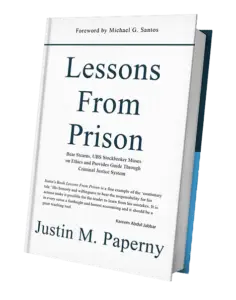The Department of Justice made one thing clear in its 2025 National Health Care Fraud Takedown: health care fraud cases are now built through data, not tips. Behind the 324 defendants charged and $14.6 billion in alleged fraud is a team of data analysts, AI tools, and cloud systems that spot billing anomalies faster than ever before.
As part of this takedown, the DOJ formally announced the launch of a Health Care Fraud Data Fusion Center. This operation merges data teams from the DOJ’s Health Care Fraud Unit, the FBI, HHS-OIG, and CMS. It’s part of the government’s “whole-of-government” strategy to end fraud by eliminating data silos and rapidly identifying suspicious patterns.
If you’re under investigation—or you even suspect you might be—this is your reality: they already have the data. They don’t need you to admit it. They can see what you billed, when, how often, and how it compares to others in your zip code, your specialty, or your practice group.
The government has the billing records, prescribing data, and corporate filings. What they don’t have is your side of the story—unless you put it in writing, back it with evidence, and make sure it’s ready before they make their case.
The Government Builds a Digital Case File—You Need to Build Yours First
When data teams flag outliers, they look for trends: unusually high billing, excessive codes, repeat claims for identical patients, geographic anomalies. Once something gets flagged, they pull claims data, subpoena bank records, cross-reference provider information, and start building a timeline.
If your name shows up in prescribing logs, payment records, or corporate documents, you won’t explain it away after the fact. You need a defense file—statements, timelines, and proof of your role—ready before prosecutors finalize theirs.
That includes:
- A clear written narrative of how you got involved in the operation or company
- A full release plan that includes housing, employment, restitution efforts, and documented steps toward rehabilitation
- A public record of those actions—updated and timestamped—at PrisonProfessorsTalent.com
- Program completion records, certificates, letters from credible references, and documented steps that prove to prosecutors and judges you’re doing the work
This is the same system Michael Santos has used and taught for years. His release plan workbook walks you through what to document, how to build it, and where to show it. Publishing on PrisonProfessorsTalent.com puts that work in front of case managers, probation officers, and even judges.
When the government looks at your file, it shouldn’t stop at billing data or prescribing logs. They should see proof that you took this seriously—letters, timelines, completed programs—before they ever knocked on your door.
You Don’t Win on Denial. You Earn Credit for Documentation.
The DOJ isn’t focused on excuses. As they build tools to detect fraud in real time, they’re looking for defendants who give them a reason to reduce charges, recommend leniency, or support alternatives to incarceration. You only get credit if there’s a paper trail—finished programs, written statements, letters, and records the government can actually review.
When prosecutors review a case built on data analytics, they’re not asking, “Did this person do it?” They’re asking, “What did they do once we knew they did it?”
If you haven’t taken action, you’ll look like every other unprepared defendant. But if you’ve built a file with program certificates, character letters, timelines, and a clear narrative, you give prosecutors real material to argue for a shorter sentence.
What the Fusion Center Means for People Under Scrutiny
The Fusion Center will speed up identification of schemes and eliminate delays between agencies. That means:
- Less time to prepare before indictment
- Fewer chances to explain your role before prosecutors decide what charges to file
- Tighter coordination across federal and state investigators
If you’re tied to billing for telemedicine, genetic testing, durable medical equipment, opioid prescriptions, or diagnostic labs, and the numbers don’t add up, your name may already be in the system.
Waiting to “see what happens” isn’t a strategy. It’s an excuse. The government already sees what happened. Your only option is to show what you’ve done since—and prove that you’re worthy of leniency.
The System Has Changed. So Must Your Preparation.
This isn’t 2010. The DOJ isn’t relying on paper audits and whistleblower complaints. They are using AI, data fusion, and centralized intelligence to build cases quickly, with hard evidence.
That means your mitigation plan must start earlier. Your documentation must be deeper. Your plan must be more than words—it must be backed by time-stamped progress that prosecutors, probation officers, and sentencing judges can verify.
Join our weekly webinar every Tuesday at 11AM Pacific / 2PM Eastern. Or schedule a personal call. If the government’s looking at you, they’re already building their case—pulling records, flipping witnesses, connecting the dots. Now’s the time to act. Build your defense, document what you’ve done, and make sure your side is on record—before the government decides how to tell it.
Justin Paperny



